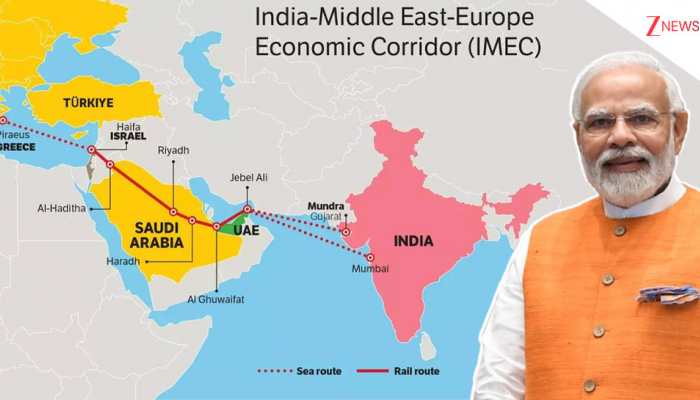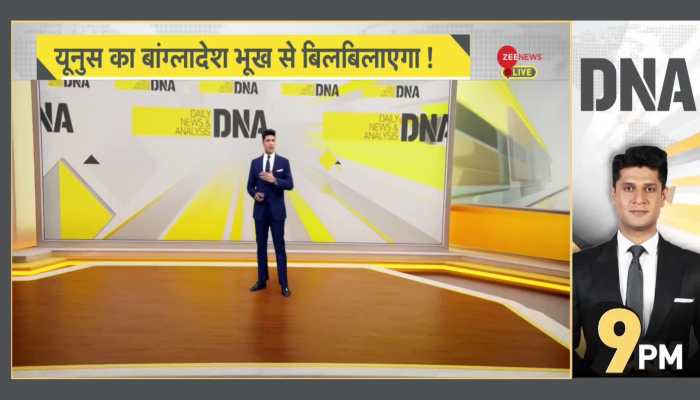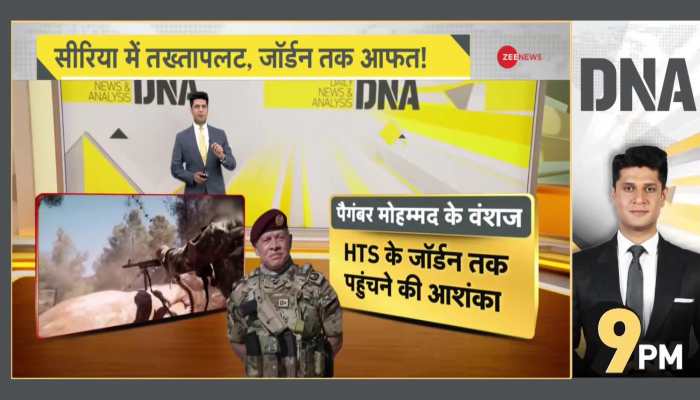EXPLAINED | How Gaza War Has Put Brakes On IMEC, India’s Global Trade Corridor Dream
The IMEC was announced during India’s G20 presidency in 2023 as a major global connectivity project aimed at linking Asia with Europe through the Arabian Peninsula. But what was once a promising symbol of regional cooperation has been derailed by the ongoing Gaza war, which has reignited old fault lines and made crucial diplomatic ties untenable.
Trending Photos
) (Photo: Zee)
(Photo: Zee)New Delhi: India’s ambitious India-Middle East-Europe Economic Corridor (IMEC), launched with much fanfare during the 2023 G20 Summit, is now facing major delays. What was once a promising symbol of regional cooperation has been derailed by the ongoing Gaza war, which has reignited old fault lines and made crucial diplomatic ties untenable.
Earlier this week, India’s National Security Council Secretariat hosted top officials and envoys from the United States, UAE, Saudi Arabia, France, Italy, Germany, Israel, Jordan, and the European Union to review the status of the India-Middle East-Europe Economic Corridor (IMEC). But despite this high-level engagement, progress on the corridor has stalled, largely due to the ongoing war in Gaza.
IMEC: A Corridor With Big Ambitions
The IMEC was announced during India’s G20 presidency in 2023 as a major global connectivity project aimed at linking Asia with Europe through the Arabian Peninsula. It comprises two main routes, one linking India to the Gulf, and another connecting the Gulf to Europe via Israel.
The eastern leg of the corridor would transport goods from Indian ports to the UAE. From there, a high-speed railway would carry cargo across Saudi Arabia and Jordan, ending at the Israeli port of Haifa. Goods would then be shipped to Greece and Italy and sent across Europe through existing rail networks. This route is projected to cut shipping time between India and Europe by up to 40% compared to the traditional Red Sea path.
In addition to trade, the project aimed to support infrastructure for clean energy, digital connectivity, and logistics, with shared ambitions to improve efficiency, lower costs, reduce emissions, and create jobs.
Why Progress Has Slowed?
When the IMEC was announced in 2023, the Middle East was going through a rare period of relative calm. Diplomatic ties between Arab states and Israel were improving, and economic cooperation was rising. The idea of a trade corridor through this region became feasible thanks to that environment.
However, just weeks after the corridor was launched, the region was plunged back into conflict with the start of the Gaza war. This violence has not only caused massive humanitarian losses but also disrupted the diplomatic trust and stability that made the IMEC possible.
Israel’s military campaign in Gaza, which has reportedly killed over 61,000 people, has strained its relations with regional partners, particularly Jordan. Tensions have worsened due to Israeli and American pressure on Jordan to accept more Palestinian refugees, which Amman strongly opposes.
Similarly, any hope of Saudi Arabia normalising ties with Israel, once a key factor in making the IMEC work, has faded. Riyadh is now pushing for meaningful steps towards a Palestinian state, something Israel has shown little interest in.
The Risk To Trade
Ironically, the same regional tensions that justify the need for an alternative to Red Sea shipping (such as Houthi attacks on cargo ships) are now the reason the IMEC is stalled. As Israel’s conflict spreads across the region, into Lebanon, Syria, Iraq, Yemen, and potentially Iran, insurance costs for trade have skyrocketed.
Despite this, the corridor remains symbolically important for Israel. In 2024, Prime Minister Benjamin Netanyahu displayed a map at the UN marking IMEC route countries as “blessed”, positioning the corridor as a way to cement Israel’s place in the region, even as its policies on Palestine alienate neighbours.
India’s Opportunity On Eastern Front
While the western leg of the IMEC, through Jordan and Israel, faces major hurdles, the eastern section from India to the Gulf remains viable. India has strong and growing partnerships with the UAE and Saudi Arabia, which have already led to initiatives like the use of UPI (India’s digital payment platform) in both countries.
However, friction within the Gulf could also pose problems. Saudi Arabia and the UAE, while partners, are also rivals. For example, Riyadh has introduced new tariffs targeting free zones in other Gulf states like the UAE, as part of its effort to attract more investment. Such competition could undermine the regional unity required for IMEC to function smoothly.
Road Ahead: Wait And Watch
In essence, the future of the IMEC is now tied to the outcome of the Middle East conflict. What was once a flagship project of regional cooperation has turned into a “day-after” plan, something that can only move forward once stability returns.
Until then, meetings like the recent one in New Delhi can help fine-tune logistics, tariff alignment, and digital trade facilitation. But without peace and regional consensus, implementation will remain on hold.
The IMEC was born from a moment of rare peace in 2023. For it to be revived, the Middle East will need another such moment, one that addresses not just trade and technology, but the political questions at the heart of the region.
Stay informed on all the latest news, real-time breaking news updates, and follow all the important headlines in india news andworld News on Zee News.
Live Tv



)
)
)
)

)
)
)
)
)
)
)
)
)
)
